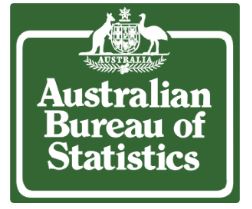Australia, the world’s greatest migrant nation
New data from the Australian Bureau of Statistics (ABS) shows Australia is the most diverse nation in the world on a per capita basis.
The data shows numbers of overseas-born migrants and refugees in Australia are rising and edging closer to 30 per cent of the total population.
The number of Australia’s population born overseas was 7.7 million in the latest ABS snapshot for 2022, representing 29.5 per cent of the population – up from 29.3 in 2021.
The date shows an annual growth of 155,000 people to the overseas-born population in 2022.
People born in England, India, China and New Zealand were the largest groups of migrants, with Indian-born people representing the largest increase since 2012
 WA had the highest proportion of migrants of any state with 34 per cent and Tasmania the lowest with 16 per cent. Victoria had the second highest proportion with 31.7 per cent.
WA had the highest proportion of migrants of any state with 34 per cent and Tasmania the lowest with 16 per cent. Victoria had the second highest proportion with 31.7 per cent.
The ABS said that each year, usually more people immigrate to, than emigrate from, Australia. This adds to the growth of Australia’s overseas-born population and thereby the national population.
At 30 June 2022, Australia’s estimated resident population was 26.0 million people – a combination of 18.3 million residents born in Australia and 7.7 million residents born overseas.
English-born Australians are the largest overseas-born group at 961,000 but this population has steadily decreased from a peak of just over a million in 2013.
Indian-born Australians (754,000) was the next largest group and surpassed its previous peak in 2020 of 724,000.
Chinese-born (597,000), were the third largest but decreased after reaching a peak in 2019 of 661,000.
New Zealand-born (586,000), was fourth largest and surpassed its previous peak in 2013 of 585,000.
The nest largest groups were from the Philippines, Vietnam, South Africa, Malaysia, Italy and Nepal.
In Victoria, Indians were the largest group of overseas-born with 272,000 people representing 4.2 per cent of the state’s population.
Not since 1891 has there been a larger proportion of overseas-born Australians when the figure was 32 per cent of the population.
The proportion fell to a low of 10 per cent in 1947, due to lower levels of migration during World War I, the Great Depression and World War II.
The proportion then rose rapidly as a result of higher levels of post-war migration. Since then, there has been a steady increase in the overseas-born population until 2021.
In 2021, the number and proportion of migrants declined. This is attributed to the COVID-19 travel restrictions and the resulting impact on overseas migration both to and from Australia.
There was a decrease in arrivals of people born overseas immigrating to Australia, as well as a decrease of people born in Australia departing to live overseas.
The various waves of migrants from different countries over time, has an important effect on the diversity of Australia’s population. Nearly every country from around the world was represented in Australia’s population in 2022.
In 2020, the United Nations estimated there were 280.6 million international migrants worldwide, representing 3.6 per cent of the global population.
When comparing countries by the absolute number of overseas-born in their respective populations, the USA was the highest with 50.6 million migrants. This made up 15.3 per cent of their national population.
Germany followed with 15.8 million migrants, representing 18.8 per cent of their population.
Next came Saudi Arabia with 13.5 million migrants – or 38.6 per cent of their population – although most are foreign workers with no pathway to citizenship.
Australia ranked ninth with 7.7 million migrants but with a higher proportion – with 29.5 per cent of the population foreign born.
Read more: Australia’s Population by Country of Birth, 2022 | Australian Bureau of Statistics (abs.gov.au)












